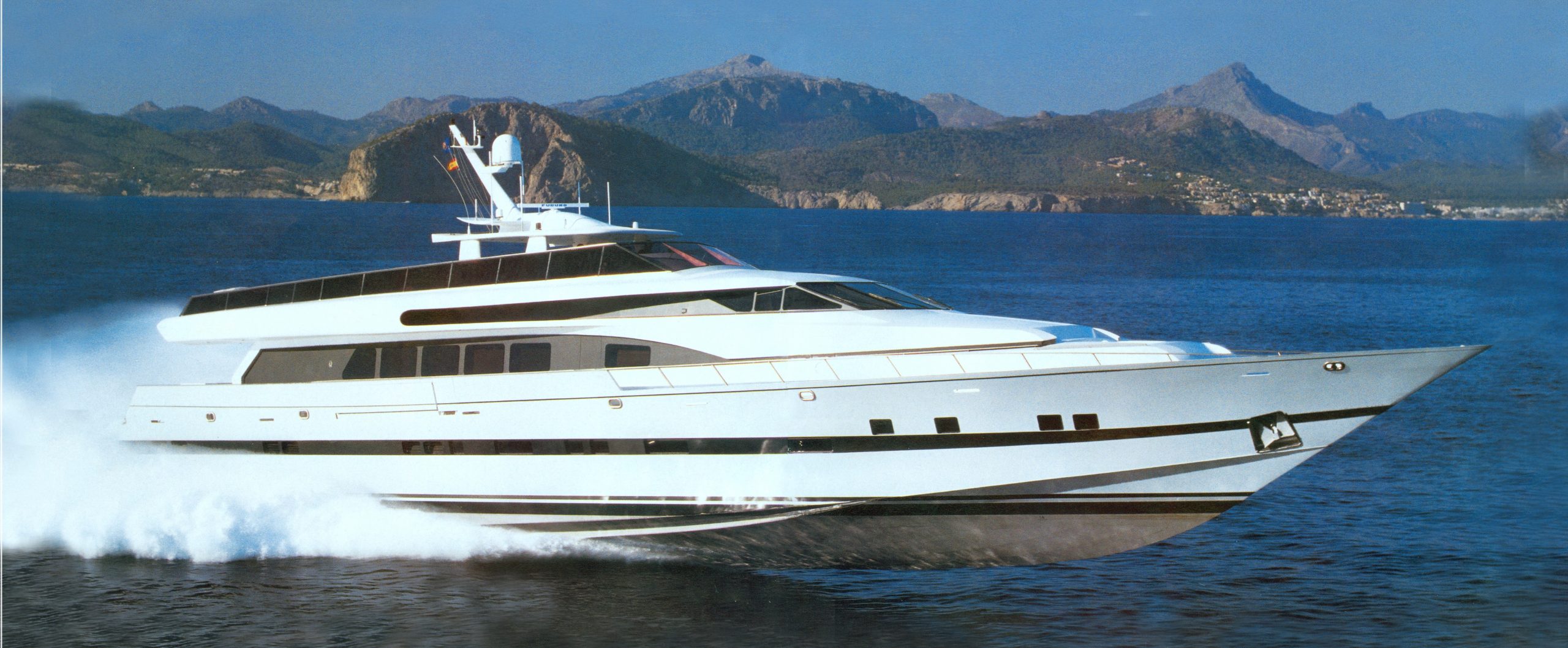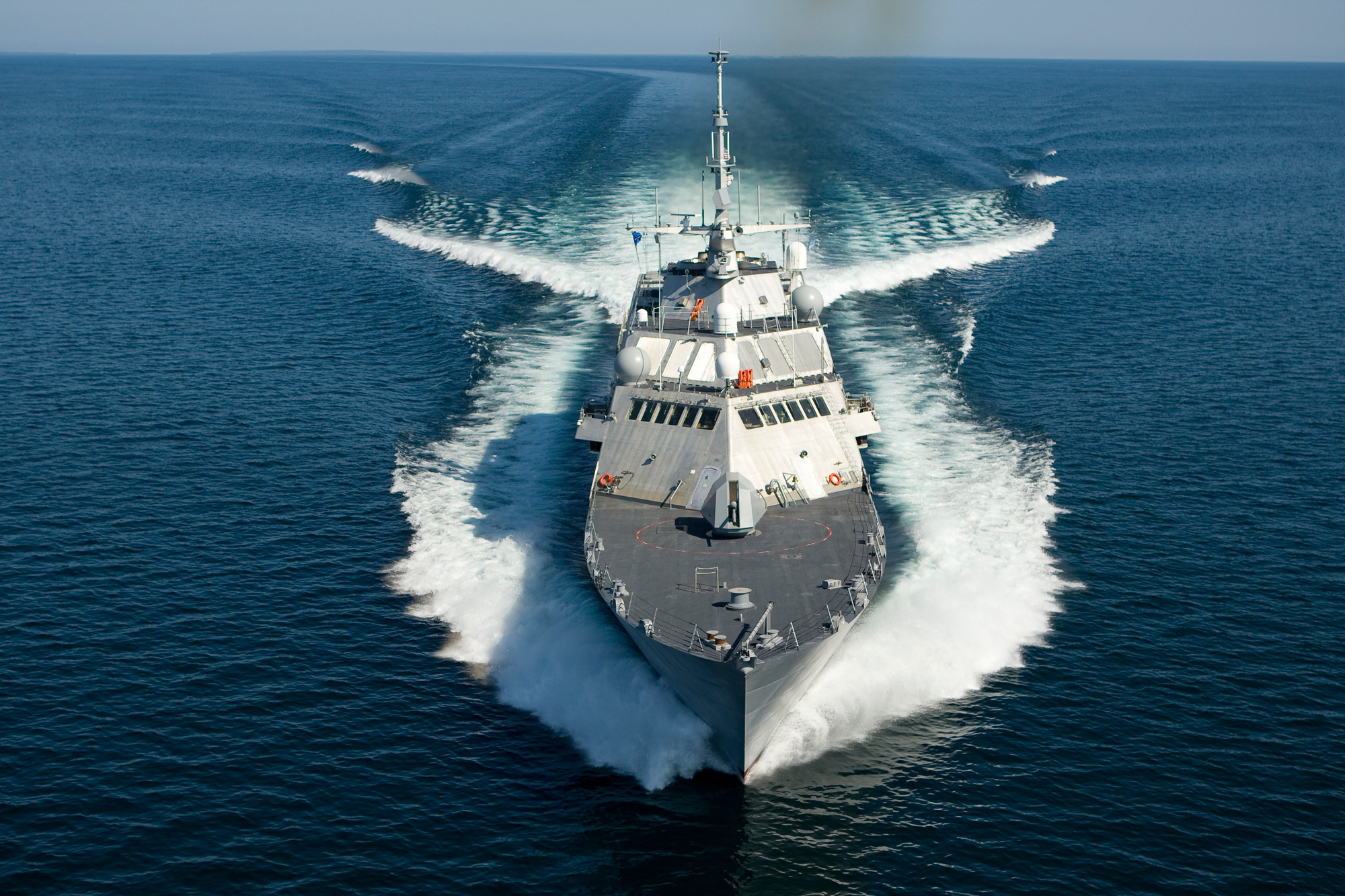DLBA YACHTING NEWS
DLBA’s DNA is Rooted in High Performance Craft
SEPTEMBER 15, 2020
The knowledge base that formed our core capabilities was rooted in U.S. Navy research and development, where Donald played an active role. Our heritage, which I am very proud of, started with the pedigree that Donald brought to this team when he founded it in 1988. From there, our team has continued to focus on applying and advancing our knowledge base. We have had the opportunity to collaborate on some record-setting vessels with impressive statistics. Every once in a while it is exciting for me to reflect on these projects in order to appreciate the fact the “DLBA Normal” is pretty special.

DESTRIERO
Fastest Crossing of the Atlantic (1992)
Designed by DLBA and built by Fincantierri, this 220′ (67m) vessel is powered by three gas turbine engines, each driving a Kamewa waterjet. When these waterjets were manufactured, they were the largest of their kind in the world, with the ability to absorb over 10MW each. Although anecdotal, it is believed that each waterjet, when operating near full power, pumps enough water to fill an Olympic size swimming pool in less than 30 seconds. This vessel was NOT designed to be the fastest vessel afloat, as one might imagine. In fact, the number one criteria for the hull form selection was seakeeping capability, where the hull form selected for the vessel would provide the crew the ability to maintain high speed in heavy seas. The program was successful, allowing the vessel to cross the Atlantic non-stop, unrefueled, at an average speed of 53 knots. Her maximum speed when fully laden was around 40 knots, and when arriving on a low fuel load, the vessel maximum speed increased to nearly 60 knots.
—

FONERS (Ex. FORTUNA)
Fastest Yacht (2001)
Designed by DLBA and built by Izar, this 135′ (41m) vessel was originally commissioned as the Spanish Royal Yacht. She was built with a COmbined Diesel Or Gas turbine (CODOG) propulsion plant with two diesels for low speed cruising and maneuvering and with three gas turbine engines for high speed operation. Specifically designed to be the fastest yacht afloat, she routinely achieved speeds in excess of 65 knots. Later in life, in consultation with our partners at Profjord and Humphree, the vessel was retrofitted with steering interceptors. These interceptors were mounted to the back of the fixed course stability fins mounted on the hull bottom. The interceptors are used to maintain heading at high speed, instead of the waterjets. The steering interceptors have very little drag, and the net thrust generated by the waterjet is increased because the steering nozzles are no longer used, eliminating their losses. The net result is an appreciable increase in maximum speed, and at this point, later in her life, FORTUNA crossed the 70 knot barrier!
—

Littoral Combat Ship LCS-1
—
Share this article online:
HOW CAN WE HELP YOU?
FEEL FREE TO CONTACT US

DLBA Naval Architects
860 Greenbrier Circle, Suite 201 Chesapeake, Virginia 23320 USA
Phone: 757-545-3700 | Fax: 757-545-8227 | dlba@gibbscox.com
STAY UPDATED
SIGN UP FOR OUR NEWSLETTER
Keep your finger on the pulse of the latest points of focus in naval architecture and engineering: subscribe to DLBA’s concise monthly newsletter. Within it, we briefly describe and picture our latest projects and concepts. We encourage feedback and seek to have our newsletter spark conversation regarding potential collaborations and further advancements as we share our passion for the industry.
